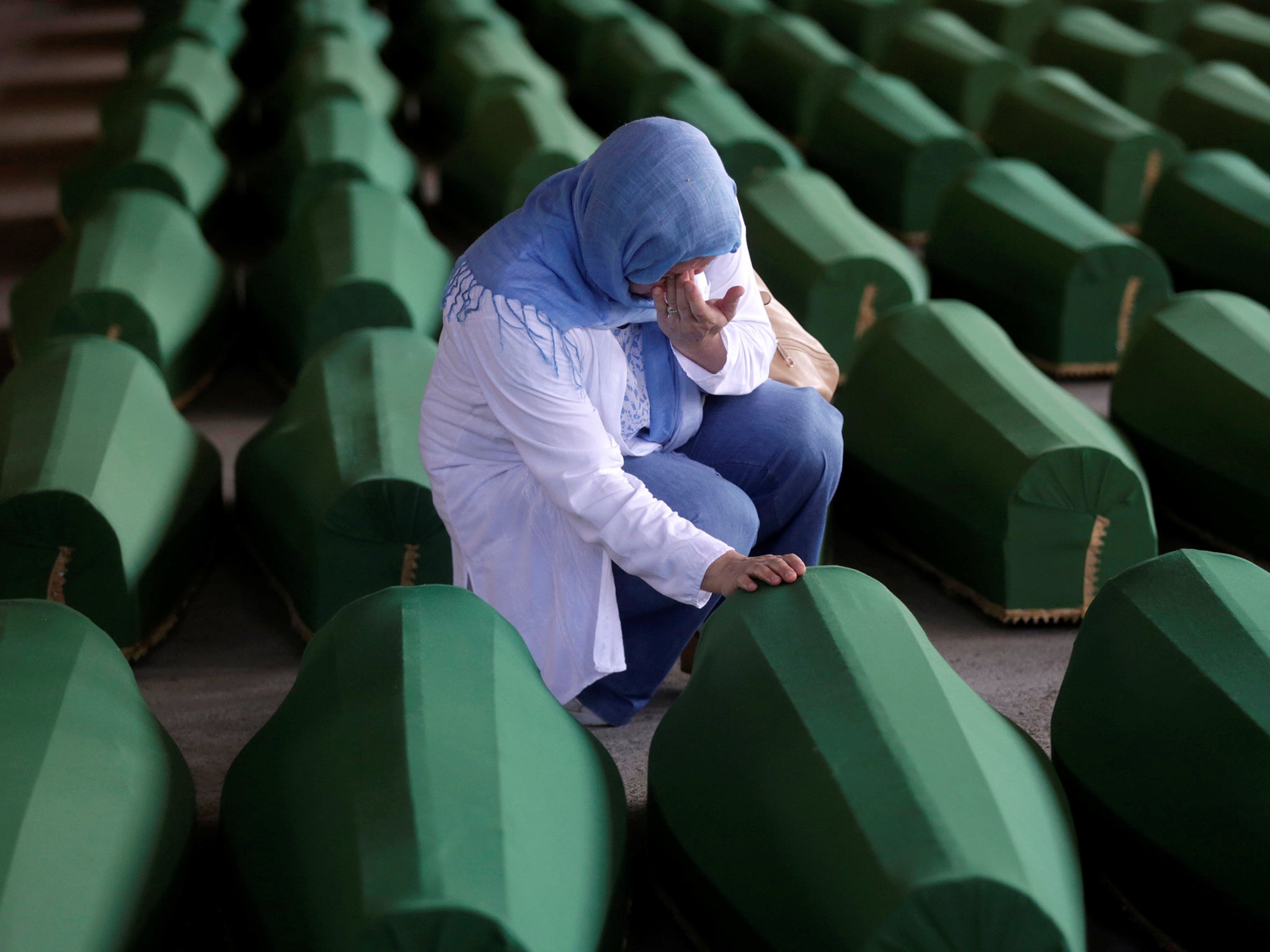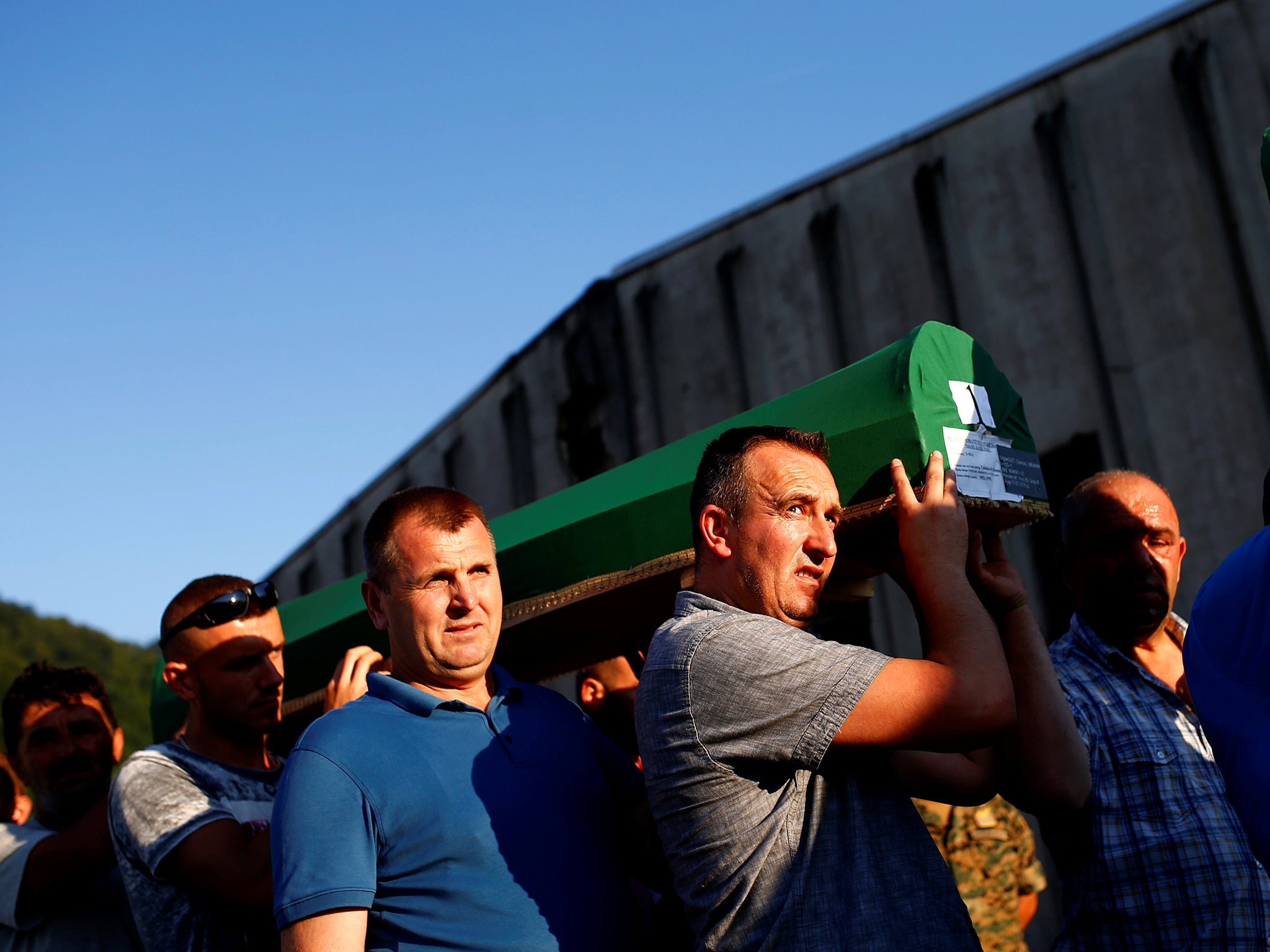Srebrenica anniversary: Thousands gather to remember victims of Europe’s worst mass murder since the Holocaust
127 newly-identified victims of the crime have been buried on its 21st anniversary

Your support helps us to tell the story
From reproductive rights to climate change to Big Tech, The Independent is on the ground when the story is developing. Whether it's investigating the financials of Elon Musk's pro-Trump PAC or producing our latest documentary, 'The A Word', which shines a light on the American women fighting for reproductive rights, we know how important it is to parse out the facts from the messaging.
At such a critical moment in US history, we need reporters on the ground. Your donation allows us to keep sending journalists to speak to both sides of the story.
The Independent is trusted by Americans across the entire political spectrum. And unlike many other quality news outlets, we choose not to lock Americans out of our reporting and analysis with paywalls. We believe quality journalism should be available to everyone, paid for by those who can afford it.
Your support makes all the difference.Thousands gathered in Srebrenica to mark the 21st anniversary of Europe's worst mass murder since the Holocaust and to attend the funeral of 127 newly-found victims.
Family members sobbed as they hugged the coffins for the last time before they were buried at a cemetery next to 6,337 other victims found previously in mass graves. The youngest victim buried this year was 14, the oldest 77.
Fatima Duric, 52, buried her husband whom she saw last when Serbs overran the eastern Bosnian enclave at the end of Bosnia's 1992-95 war.
The United Nations had declared Srebrenica a safe haven for civilians, but that didn't prevent Serb soldiers from attacking the town they besieged for years. As they advanced on July 11, 1995, most of the town's Muslim population rushed to the nearby UN compound hoping that the Dutch peacekeepers would protect them.
But the outnumbered and outgunned, peacekeepers watched helplessly as Muslim men and boys were separated for execution, while the women and girls were sent to Bosnian government-held territory. Nearly 15,000 residents tried to flee through the woods, but were hunted down and also killed.
International courts defined the massacre of more than 8,000 people as an act of genocide.

The victims were buried in mass graves, which were dug up shortly after the war by the perpetrators and relocated in order to hide the crime. During the process, the half-decomposed remains were ripped apart by bulldozers. Body parts are still being found in more than 100 mass graves, put together and identified through DNA analysis.
They are buried each year at the memorial centre across the road from the former UN base where most of the victims were last seen alive.
Ms Duric lost her husband as they fled with their two children through the woods and walked for days toward government-held territory.
"After all these years, his body was found. In fact, just a few bones. I am burying them today," Ms Duric said.
Join our commenting forum
Join thought-provoking conversations, follow other Independent readers and see their replies
0Comments